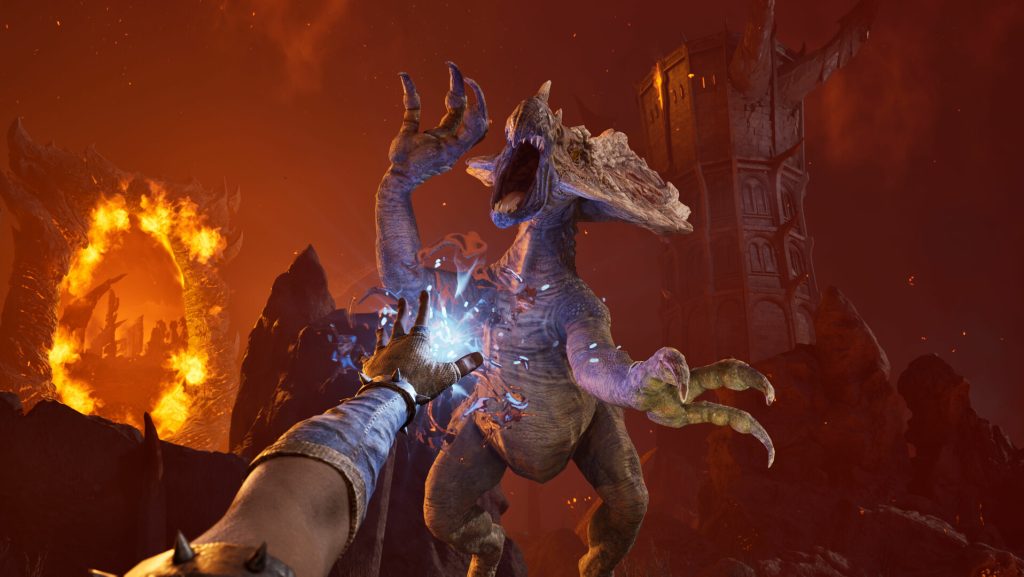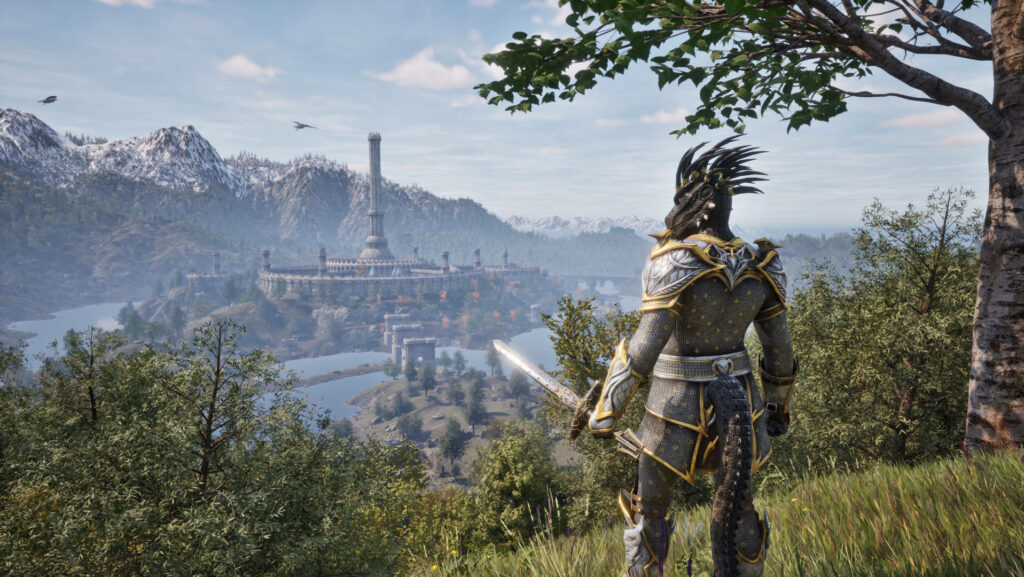After weeks and months of constant rumours and speculation, The Elder Scrolls 4: Oblivion Remastered is not only official, it’s out now as well for Xbox Series X/S, PC, and PlayStation 5- and contrary to what its name suggests, it is not just any ordinary remaster. As has been alleged for a while, Oblivion Remastered takes the 2006 classic and revamps and enhances it heavily, applying improvements both big and small to significantly elevate and modernize the experience to an extent that is unheard of with remasters. Calling it a full on remake really wouldn’t be much of an exaggeration, and honestly, would only be inaccurate on a pure technicality.
Either way, there’s a lot to talk about when it comes to the many visual and technical improvements that Oblivion Remastered makes over the original game, which, incidentally, is exactly what we’re here to do. Join us as we take a look at several different areas where the newly released RPG touts notable technical and visual enhancements over its source material.
LIGHTING
This, of course, is one of the most noticeable and prominent changes that Oblivion Remastered has made on the visual front, and you notice it pretty much the moment you begin playing (and especially as soon as you step out of the tutorial dungeon and out into the wide open world). The original Oblivion had a rather garish, over the top look to it, a lot of which was down to its lighting and its excessive use of bloom.
That, thankfully, is no longer the case here. Lighting in Oblivion Remastered is much more grounded and realistic. With better, more dynamic lighting and consequent improvements to shadows and reflections, the remaster’s world looks a lot sharper and much more gorgeous. Atmosphere and immersion tend to be key priorities for any Elder Scrolls game, and Oblivion Remastered benefits visibly with both thanks to its changes.
ENVIRONMENTS
And here’s where Oblivion Remastered boasts the biggest of its enhancements, to the extent that, as mentioned previously, it is effectively a full and proper remake. All of the assets and models have essentially been reworked from scratch or, if nothing else, given massive uplifts, which means the game’s environments end up looking absolutely stunning, especially when pit directly against the original game.
Oblivion’s Cyrodiil has a lot of greenery to look at, but thanks to the improved lighting and shadows, more obsessive level of detail, sharper textures, comprehensively better looking water and water effects, and what have you, its environments take on a much more vibrant and at least somewhat more varied look. Granted, you’re still in the same map and the same locations, which means environments largely have the same visual style as the original game. They do look much more alive, however, which is what you’d want for a re-release of a nearly two decade old game.
DRAW DISTANCE AND WORLD DENSITY
As a 2006 game, the original Oblivion’s draw distances were understandably had pretty lackluster, but this is another area where the remake (or remaster) sees radical improvements. Oblivion Remastered’s greater draw distances allow your surroundings to vastly stretch out and offer up some truly stunning vistas. For instance, the moment you step out into the world for the first time, it’s hard not to be impressed by the distant skyline of Imperial City, or the mountains looming against the sky in the background.
Environments are also just much denser in Oblivion Remastered than they were in the original. The telltale Xbox 360 era lack of vegetation in the original game’s world is a thing of the past, with the remaster instead bringing its locations to life with dense vegetation, forests, environmental objects, effects, and what have you.
CHARACTERS
Character models, faces, and animations were pretty rough and janky in the original Oblivion even back when it first came out, while by today’s standards, they feel downright ancient. Naturally, this was one of the areas most desperately in need of changes, and Oblivion Remastered successfully makes those in abundance. Faces are much sharper and bear much greater details, with hair and fur looking much improved and, as a result, different races now looking much more authentic. The humans also don’t look like the walking nightmares that they almost all invariably looked like in the original game, which is also a bonus. Animations, lip syncing, and facial movements have also received upgrades, which, combined with at least partially re-recorded dialogue (at least in some instances) makes for characters and NPCs that don’t feel as static and downright glitchy as they so often did in the 2006 title.
CLOTHING AND ARMOUR
It’s easy to gloss over how much better the clothes and armour worn by characters throughout all of Cyrodiil look in Oblivion Remastered, but viewed side by side, those changes become much more apparent. Though the core designs in general have remain largely unchanged (for the most part), with the additional level of detail and little flourishes they now boast, a lot of these assets can easily pass off as entirely fresh. More detailed stitching, realistic folds and creases, and improved animations paired with movement are some of the ways that Oblivion Remastered tweaks the clothing and armour you see throughout the game.
LOADING
Like the original game, Oblivion Remastered still doesn’t present a fully seamless open world (something that Bethesda fans are obviously unfortunately used to at this point). That means there are parts of the map (like, say, pretty much all indoor environments) that are instanced and separated from the larger world by loading screens. Thankfully, however, these loading screens are pretty brief, and even at the worst of times, they tend to take about 6-8 seconds, while on average, they are usually even quicker.
CAMERA

The camera has seen instantly noticeable tweaks in in Oblivion Remastered, regardless of whether you’re playing first or third person. During gameplay, animations feel weightier and slicker, though on the storytelling front, with conversations and cutscenes, the changes are less prominent. You still get the cartoonish zoom, you still get the camera locked to whatever character you’re speaking to while they look directly into your soul- all of that stuff just looks less goofy now thanks to the improved visuals and the radically better looking and animated characters and character faces.
WHERE DOES IT STILL NEEDS IMPROVEMENTS?
The Elder Scrolls 4: Oblivion Remastered is obviously a huge and undeniably high effort enhancement of the original game, and it deserves a ton of credit not only for the scale that it makes its many changes at, but also how well it does so. Is it a spotless experience though? Unsurprisingly, no, it’s not. You still get instances of clipped assets and unloaded textures, and the performance can be a bit jittery from time to time (though that will obviously vary from hardware to hardware). There are times when you can definitely see the bones of the much older game that this shiny new remaster has been built on top of, so there are still ways that it feels a bit aged that perhaps an even more ambitious remake could have been able to address. Even in its current form, however, Oblivion Remastered is a hugely impressive effort by Virtuos and Bethesda.


